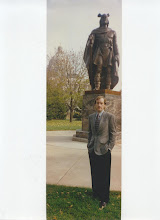Spring is soon here and the talk of flooding in Minnesota is all the rage.
Keeping in mind that Minnesota is a vast area with widely varied and unique geography and topography...
Let's go back to basics.
There are about five real big variables, aside from unique geography, that determine the magnitude of a "Flood".
In no particular order, some of the things you need to get a real good flood here in Minnesota are....
1) A wet fall. Going into winter with thoroughly saturated ground with a high water table evident by full lakes, swamps, creeks and rivers.
2) A hard freeze prior to heavy snow cover. A hard deep frostline. The saturated soils freeze and become impermeable down to relatively deep depths.
3) A winter with lots of snow with lots of water content.
4) A strong warming that provides a quick thawing of the snowpack.
followed by a
5) A wet rainy spring.
Each drainage basin has its own situation. Minnesota is large. The Blue Earth is unique as is the Saint Louis or The Red River.
The Red is on the flat bottom of a ten thousand year dead marginal glacial lake. It is a river that drains a large area.
It winds its way slowly on the table flat silt bed, finding the slightly lower ground which, overall, leads north. North to Hudson Bay.
The headwaters of the Red River of the North typical thaws before the downstream half, north of the Canadian border.
Often, the flowing water backs up when it meets the ice dams where the floating growlers stack up and stop flow. This was well understood long before the European settlers arrived.
In the bottom land of the Red River basin, once the water rises high enough, the river overtops the natural levies of the riverbanks and quickly sprawls across the very flat terrain directly bordering the river.
Because it is so flat it may travel laterally for miles with just one foot of increased surface elevation.
And tributary streams from higher elevations may experience the effects of this back up.
Grand Forks is named Grand Forks for a reason.
Water will always seek its own elevation. The farther the fall the more energy involved, and faster falls are usually more dramatic then slow.
But not always.
The St. Louis falls fast, the Minnesota and the Red fall slowly, for example.
Water is heavy, "a pint's a pound the whole world round" is an old truism from the sea. Try to walk across a small flowing stream and you will understand the power of moving water.
Six inches of flowing water will move a car sideways.
To control the water you must control the energy.
Subscribe to:
Post Comments (Atom)


No comments:
Post a Comment